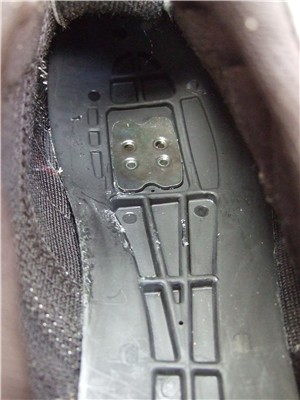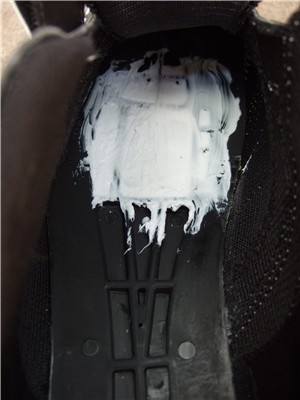

Most “road” cycling shoes, which is to say those with soles that take the now-standard “Look-style” three-bolt cleat format, have, under any insole, a footbed with a smooth, regular, flatt(ish) surface with no protrusions or indents that might give rise to unwanted pressure on the sole of the foot.
Not so the many Shimano mtb and touring shoes designed to work with the two-bolt mtb cleat standard that use the stiff plastic moulded midsole – the bit on top of the tread – shown in the pictures.
In order to save weight and accommodate the moveable plate to which the cleat bolts attach, the sole has indentations and ridges, some of which are right where the ball of the foot applies pressure during pedalling.
The insole, of course, masks the sensations that would be felt by the foot without it, to the point that many wearers of these shoes remain indifferent to the irregularity of the footbed. Nevertheless, for the heavier or more powerful rider it can cause two problems: some power is lost to “squashing” of the insole into the indents, and on a longer or faster ride pressure hotspots may cause discomfort.
The obvious answer to both problems is to fill the indents and create a regular surface for the foot. Naturally this is best done once the cleat has been positioned since the moveable plate is less moveable afterwards…
Of the many and various filler materials tried, the most suitable has proven to be silicone bathroom sealant; it is flexible and won’t crack, adheres well to the midsole but can be removed if necessary, is water- and mould-resistant and is easy to apply. Other fillers that meet the same criteria may be readily available.
There is no obvious benefit to be had from filling the indents in the mid-foot instep area since it does not press on the sole; nor need the heel indents be filled. The important part is the ball of the foot as shown since this is where pedalling pressure is applied – by most cyclists…







